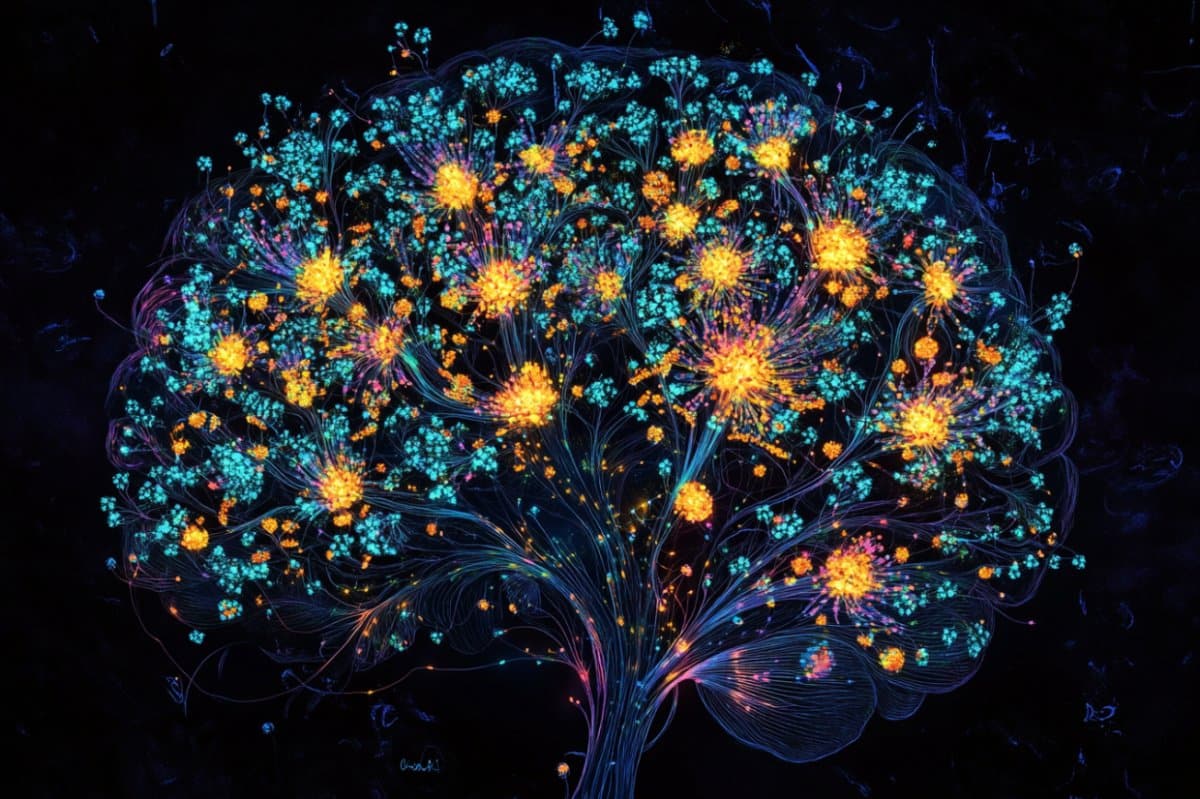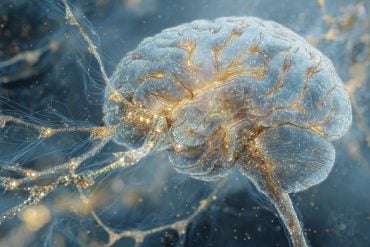Summary: For nearly a century, scientists believed that neuromodulators like norepinephrine adjusted brain communication by acting directly on neurons. A new study overturns this long-held view, revealing that astrocytes—support cells long considered secondary—are the key intermediaries.
When norepinephrine is released in the brain, astrocytes detect it and release their own chemical messengers, dampening synaptic activity and reorganizing neuronal connections. Even when neurons can’t sense norepinephrine, these changes persist, as long as astrocytes remain responsive.
Key Facts:
- Astrocyte Mediation: Norepinephrine reorganizes brain activity through astrocytes, not neurons.
- Synaptic Dampening: Astrocytes release a secondary signal that weakens synaptic connections in response to norepinephrine.
- Therapeutic Potential: Targeting astrocytes may improve treatment of attention and mood disorders.
Source: WUSTL
Researchers at Washington University School of Medicine in St. Louis have upended decades-old dogma of how connections between brain cells are rearranged during states of heightened vigilance or attention.
The team found that a brain chemical associated with alertness, attention and learning alters brain connectivity and function not by acting directly on neurons, the cells known for their quick transmission of information, but through the work of astrocytes, another, slower-acting type of brain cell that is often overlooked in the field of neuroscience.
The discovery, published in Science May 15, fundamentally changes current understanding about the determinants of brain network communication and activity.
It also calls for greater focus on astrocytes as therapeutic targets in the treatment of attention, memory and emotional disorders.
“Textbooks tell us that neuromodulators like norepinephrine fine-tune neurons directly — in fact, textbooks tell us that everything in the brain is about neurons,” said Thomas Papouin, PhD, assistant professor of neuroscience at WashU Medicine and the senior author of the study.
“It seems that a lot of brain wiring and activity is probably orchestrated by astrocytes, on slower timescales. This is the type of discovery that profoundly reshapes our understanding of how the brain works.”
From the brain’s wallflower to center stage
For the brain to dedicate itself to tasks that need attention, or to respond to unexpected stimuli like a fire alarm, it needs to be able to rewire itself by changing how brain cells communicate. This process is driven by the release of chemicals known as neuromodulators, including norepinephrine, in the brain.
How these neuromodulators reorganize communication in the brain is poorly understood. The assumption for the past 80 years has been that neuromodulator chemicals act on neurons.
Meanwhile, for at least 30 years astrocytes have been shown to contact and interact with synapses, which are the specialized structures where neurons communicate with one another.
Researchers have long suspected that astrocytes had the potential to rearrange communication between neurons and, therefore, the flow of information in the brain.
Because of their very fine and sprawling shape, these cells are ideally positioned to monitor and detect neuromodulators like norepinephrine.
“We wanted to test the idea that perhaps neuromodulation of synapses by norepinephrine is an astrocyte business,” Papouin said.
To do so, Papouin and his team stimulated norepinephrine secretion from mouse brain cells or exposed mouse brain slices to norepinephrine and found that norepinephrine weakened connections between neurons, as known for decades.
However, researchers found that norepinephrine also triggered activity among surrounding astrocytes. Once triggered by norepinephrine, astrocytes produced a second chemical that they released onto synapses, which caused the dampening of synapse activity.
Even when neurons’ ability to directly sense norepinephrine was removed, norepinephrine was still able to rearrange neuronal connections. When astrocytes’ ability to sense or respond to norepinephrine were taken offline, on the other hand, norepinephrine was unable to reorganize neuronal connectivity.
Their findings indicate that neuromodulators such as norepinephrine rearrange neuronal connections in the brain by signaling through astrocytes rather than directly onto neurons.
The results also suggest that targeting astrocytes could be an effective way to reshape brain activity to potentially treat brain disorders.
Papouin’s team has started looking at existing drugs that are believed to act on neurons, to see if they require astrocytes to be effective. If so, perhaps astrocytes could be targeted directly for therapeutic purposes.
“There are so many drugs out there that interfere with norepinephrine signaling in the brain, in particular in the treatment of ADHD or depression. I wonder how many of them require astrocytes to modify brain activity,” said Papouin.
Funding: This research was funded by the National Institutes of Health grants R01MH127163-01, R01DK128475, R01NS102272 and R01HL31113-30, Department of Defense grant W911NF-21-1-0312, The Brain & Behavior Research Foundation, NARSAD Young Investigator Award 28616, The Whitehall Foundation grant 2020-08-35 and The McDonnell Center for Cellular and Molecular Neurobiology Award 22-3930-26275U. The content is solely the responsibility of the authors and does not necessarily represent the official views of the NIH.
About this neuroscience research news
Author: Mark Reynolds
Source: WUSTL
Contact: Mark Reynolds – WUSTL
Image: The image is credited to Neuroscience News
Original Research: Closed access.
“Norepinephrine signals through astrocytes to modulate synapses” by Thomas Papouin et al. Science
Abstract
Norepinephrine signals through astrocytes to modulate synapses
Locus ceruleus (LC)–derived norepinephrine (NE) drives network and behavioral adaptations to environmental saliencies by reconfiguring circuit functional connectivity, but the underlying synapse-level mechanisms are elusive.
Here, we show that NE remodeling of synaptic function is completely independent from its binding on neuronal receptors. Instead, astrocytic adrenergic receptors and calcium dynamics fully gate the effect of NE on synapses.
Additionally, we found that NE suppression of synaptic strength results from an adenosine 5′-triphosphate (ATP)–derived and A1 adenosine receptor–mediated control of presynaptic efficacy.
These findings suggest that astrocytes are a core component of neuromodulatory systems and the circuit effector through which NE produces network and behavioral adaptations.








